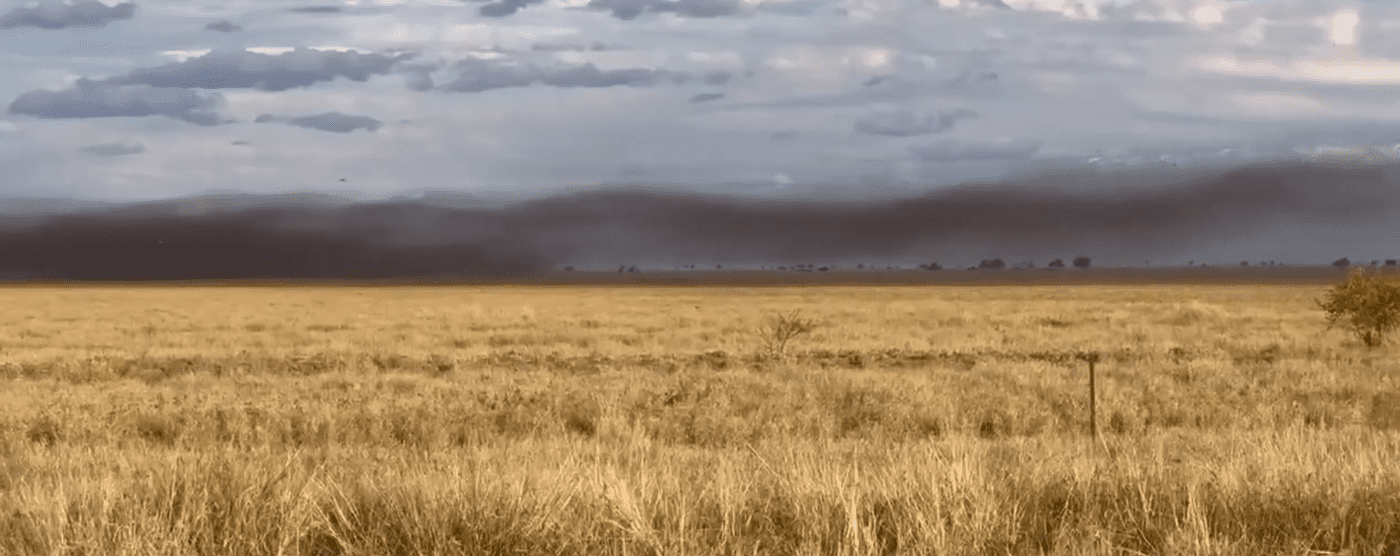Urgent Action Required as Locust Swarms Emerge in Queensland

The dark mass on the horizon in this image is not a cloud, but a locust swarm.
QUEENSLAND farm lobby group AgForce is calling for swift action on locusts, as swarms have begun to affect areas in the state’s west.
Recent reports indicate outbreaks of migratory locusts in Central and North Queensland, specifically in regions such as Aramac, Muttaburra, Corfield, Longreach, Hughenden, and Prairie. The unusual outbreak has been largely attributed to timely rains and a milder winter.

Shane McCarthy – AgForce President
In an interview with Beef Central, AgForce General President Shane McCarthy highlighted concerns about a more significant outbreak in Spring, when conditions are likely to enhance the locust numbers.
“The sooner we control them, the less severe the problem will be in Spring,” said Mr. McCarthy. “I have been in contact with the Department of Primary Industries (DPI), and they are mobilizing efforts in the Winton and Corfield regions.”
The Importance of Early Intervention
McCarthy stressed the critical need to identify where locusts have already laid eggs to manage the next wave effectively. “If action isn’t taken now, we could face a much larger issue in just eight weeks,” he warned.
“Locusts on the wing significantly impact farmers economically, so swift action is vital,” he added.
Government Issues Guidelines for Locust Management
In light of the locust reports, the Department of Primary Industries has released guidelines for affected producers through their FutureBeef platform. Here are some key recommendations:
Monitoring and Reporting
- Conduct Regular Inspections: Monitor properties for signs of locust activity. Increased bird activity might indicate the presence of locusts or nymphs.
- Collaborate With Neighbours: Coordinate with neighboring landholders for effective monitoring and control operations.
- Report Detections Promptly: Notify the DPI at 13 25 23 or via email (locustreports@dpi.qld.gov.au) if large numbers of locusts are found.
Chemical Control Best Practices
Employing chemical control methods can effectively manage locust populations:
- Use Registered Chemicals: Follow label instructions meticulously when applying chemicals.
- Calibrate Your Equipment: Properly set up spray equipment to ensure accurate application.
- Observe Withholding Periods: Respect withholding periods post-treatment to ensure the safety of livestock and crops.
- Engage Professionals: For aerial applications, consult licensed operators to discuss the most effective and safe strategies.
Next Steps for Locust Control
While landholders hold primary responsibility for locust management, support from government and industry is equally crucial. Targeted surveillance will be conducted to monitor locust activity, and the Australian Plague Locust Commission will implement control measures if necessary across state borders.
For farmers and stakeholders in Queensland, immediate action and cooperation are vital in preventing the escalation of locust infestations.
This HTML structure provides a clear and organized article suitable for WordPress integration, using appropriate tags for headings, paragraphs, images, and lists, ensuring good readability.



